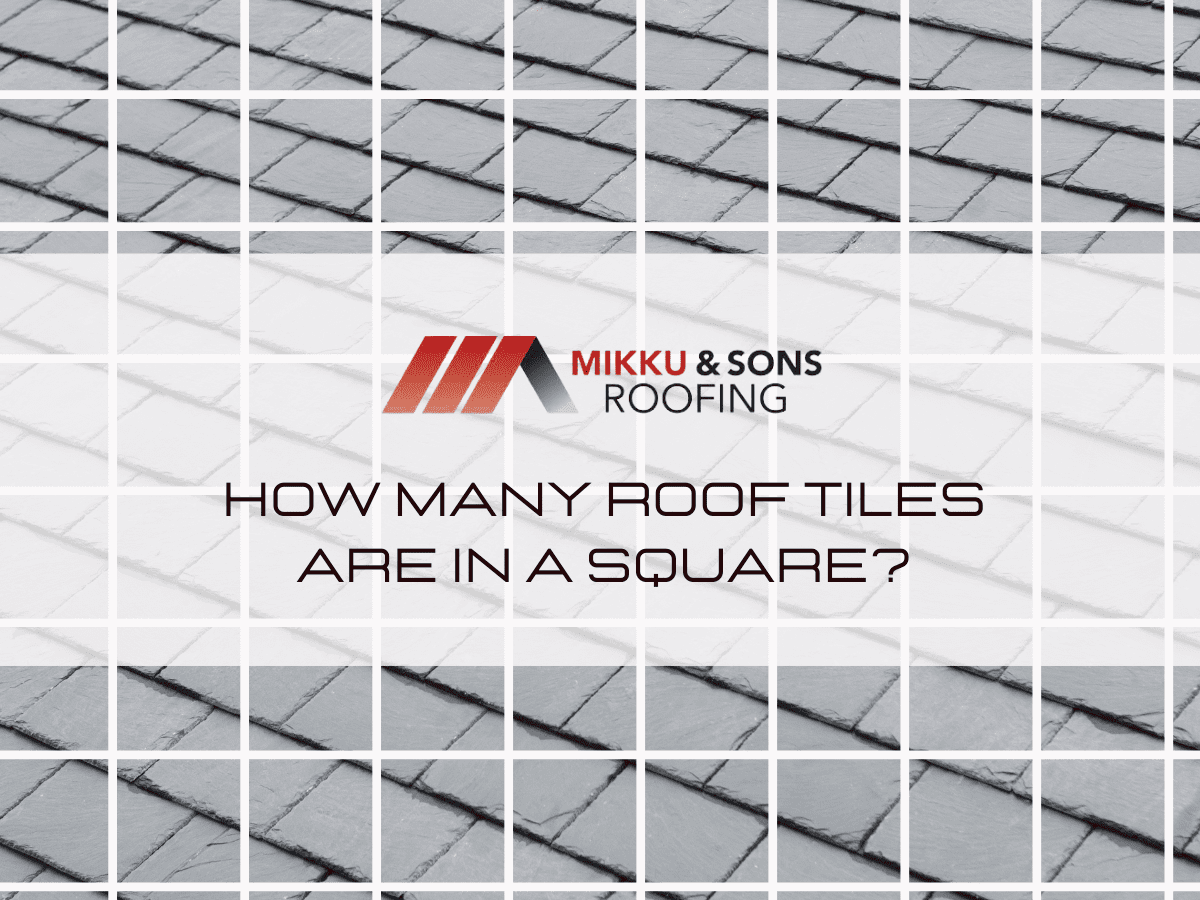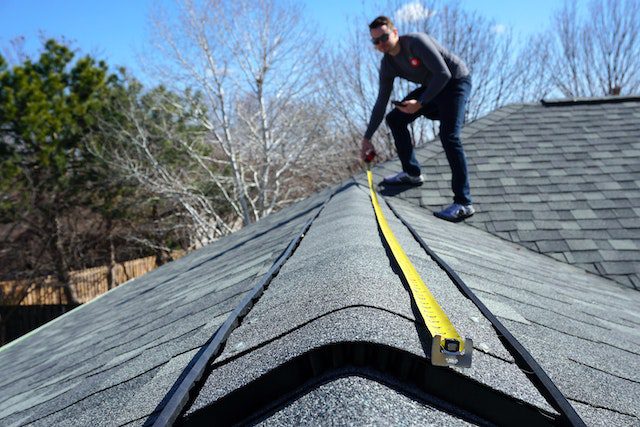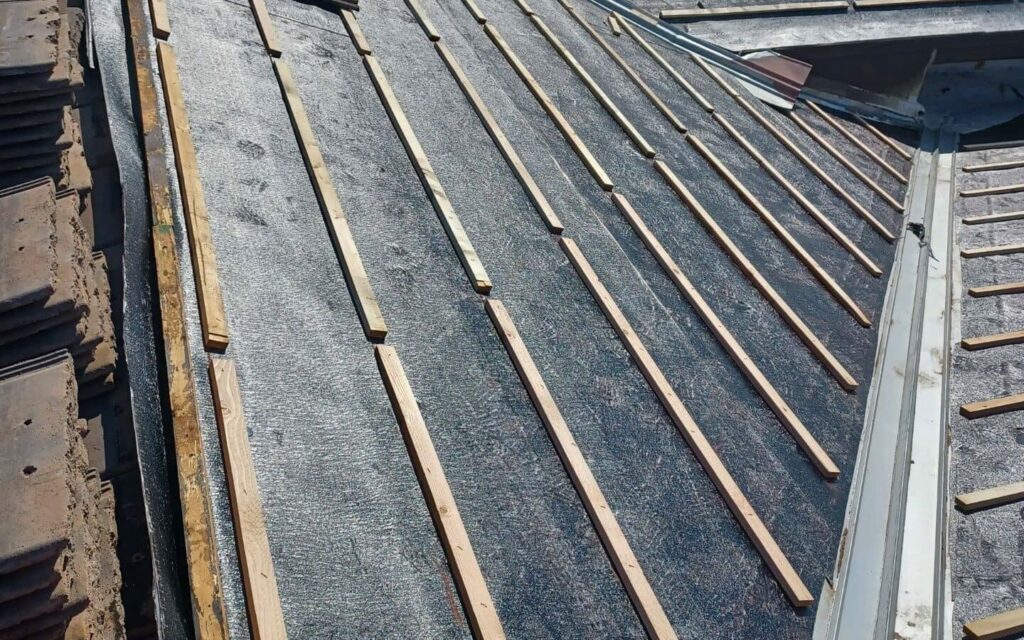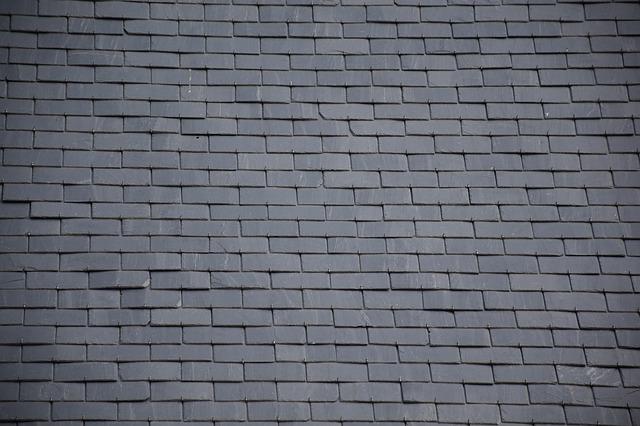

It is important to choose the correct type and amount of roof tiles to ensure that the project is completed on time and within budget. When it comes to tiling, homeowners frequently have questions about how many tiles they'll need.
Many skilled roofers will tell you that this isn't always an easy calculation to make since you need to figure out how many pieces of material are required for the roof. There is a larger helpful unit of measurement that can be used to answer the question: How many roof tiles are in a square?
A square is a unit of measurement for determining the roof's size and is equal to 100 square feet of roof area. The total square footage of your roof should be divided by 100 to get the number of roofing squares.
The square unit of measurement also ensures a standardized unit of measurement since 10' x 10' is equal to 100 square feet, and both would require a square of material cover. It's not quite that straightforward to get you the required number of materials, but it's a start.
In addition, you will need to know the slope and dimensions of your roof to get the total area in square feet. This way, you can calculate the number of squares on your roof and then order an additional 15% in backup materials to get a rough estimate.

The first step before ordering the right number of tiles for your project is measuring your roof. Knowing exactly how much material you need requires knowing the size of your roof.
Measuring a roof can be simple or difficult, depending on how intricate the design of the roof is. Your roof may have more than two planes because of features such as:
You may have to know the pitch of your roof to get true and accurate measurements. Measuring your roof requires a lot of safety input, and if it seems difficult, you may hire a professional to do it for you.
Safety when measuring your roof:
It is important to note that you don't need to be on a roof to measure it. When walking on a roof,never walk backward as the slope may trigger a fall.
If your roof has a high pitch or steep slopes, you may need scaffolds to get to the ridge. A ladder is one thing you are sure to use.
When using a ladder:
Measuring flat roofs:
You will need to calculate the roof area by multiplying the width and length measurements in linear feet. This gives the area of your roof in square feet.
Measuring gable roofs:
After measuring the width, measure the length. The gable roof width is measured from one eave to the other, and the hip roof breadth is computed similarly.
You can get an exact measurement from the eave or ridge rafter. Repeat the operation on the other ridge rafter to achieve an accurate reading.
When measuring a roof's length, use the ridge as the gable roof ridge and length are equal. By measuring a gable roof's ridge, you may determine its length.
After the roof's length, measure the valleys and hips. Some roof measurements demand precision: Inaccurate ridge, hip, or valley measurements wouldn't matter much.
Multiply the width and length of each slope and add them up to get the total roof area.
Roofing materials are bundled in squares, and this can be calculated once you get the total area of your roof. You can get the number of squares by dividing your total roof area by 100.
You can use other formulas for this purpose, and you can find them all online via a converter. When ordering the tiles, order 15% extra to cover waste and ensure you have enough to entirely cover the roof.
Roof tile calculators can be used to figure out how many tiles you will need for the project. They are designed to work with both imperial and metric units, and all you need are the measurements of your roof.
Having the measurements of the ridges, hips and valleys give a more accurate measurement.
You can work out how many tiles you need by yourself. If the tile manufacturer has provided the tile coverage per square foot, all you need is to multiply the figure by your roof area.
If this figure is not given, you will have to go through the long route of finding out how many squares your roof has.
The number of roof tiles in a square of your roof area depends on a few factors. All of the mentioned criteria must be considered when determining how many roof tiles are needed for a project.
Some of them include:
There is a wide variety of tile sizes and styles to choose from, as well as suitable roof types. The number of roof tiles needed can vary depending on a number of factors, including tile size, roof pitch, required headlap, and batten gauge.
There are benefits and drawbacks to using any size of roof tiles. Large roof tiles require less time and effort to install than numerous little tiles, and the roof can be constructed with fewer bricks, making it easier to lay.
The use of large roof tiles can save labor and material costs while also speeding up the process of roofing. However, there are functional and aesthetic benefits to using tiny roof tiles.
One useful benefit is that the reduced surface area is somewhat more stable and protected from heavy blows. In addition, the little bricks are simple to repair in the event of a rupture or damage.
Visually, smaller roof tiles are more controlled and add intricacy than larger bricks. They may, however, look light but increase the roof's weight.
When planning a building, there are a number of considerations that go into determining the roof pitch or steepness. It must, above all else, be suitable for the climatic conditions there.
A flat roof is not as sturdy as a pitched roof, and it may even cave in under the weight of heavy snowfall; thus, it is important to choose a roof pitch based on the climate where the building will be located.
The roof pitch determines the headlap, batten gauge, and the number of tiles you will use.
The top of a tile is known as the head, and when one tile is laid on top of another, the headlap is the successive distance between the course above it. Each tile has a maximum and minimum headlap, dependent on a few factors.
The slope affects the headlap, with the headlap increasing with an increase in slope. If a small headlap is used on a low slope roof, there will be a need for more battens hence more tiles per square.
This can be a negative on the roof weight, which can make it collapse in on itself. The tile headlap is used to calculate the batten gauge.

The gauge is the distance between the battens (the space from the top of each batten). It is also the distance from the bottom of one tile to the bottom of the following course.
The batten gauge largely determines the number of tiles in a square and depends on the slope. The batten spacing should not exceed the manufacturer's recommended spacing for the tile.
To get the batten gauge, measure the distance between the eaves and the ridge at their highest points. Divide the distance by the tile's maximum gauge.
To get the total number of courses up the slope, round the figure up. The Batten gauge can be calculated by multiplying the measured distance by the number of courses.
From the above information, it is clear that the number of tiles in a roofing square varies according to the circumstances mentioned. The total number of tiles largely depends on your roof pitch, batten gauge, and overlap since each type's tile sizes are constant.
| Type of tile | Some example sizes (Varies with manufacturers) | The approximate number of tiles per square |
| Clay roof tiles | 463 x 297 mm, 371 x 261 mm, 320 x 370 mm, 474 x 285 mm, and 470 x 300 mm. | 75 to 89 |
| Plain tile | 270 x 170 x 12 mm | 230 |
| Roman Tiles | 342 x 255 x 43 mm | 121 |
| Concrete tiles | 420 x 330mm and 267 x 168mm | 72 to 230 |
| Traditional slate | 510 x 255 x 6mm | 80 |
Roof tile unit dimensions are useful for many roofing-related tasks, especially when it comes to making plans. When estimating the cost of a new roof or roof repair, the number of tiles needed or used is a major consideration.
Knowing the dimensions of the roof tiles you intend to use is essential before starting any roofing or re-roofing project. Dimensional variation in roof tiles and how they affect the number of tiles in a square are discussed below.
Roof tiles made of clay were among the first to be produced many decades or even centuries ago. Clay is easy to shape, comes in a wide range of colors, and retains its hues well.
Although the natural orange or red hues of clay tiles were the norms in the past, you may find clay roof tiles in an infinite variety of colors and forms these days.
There is a wide range of tile sizes from which to choose while shopping for clay roof tiles, including 463 x 297 mm, 371 x 261 mm, 320 x 370 mm, 474 x 285 mm, and 470 x 300 mm.
Typically, plain tiles are flat, and their battered appearance comes from discoloration rather than wear and tear. These plain roof tiles are meant to evoke the kind of tiles used on older, more conventional structures.
The typical roof tile is 270 x 170 x 12 mm, though these measurements can vary slightly from one manufacturer to the next.
When calculating the number of tiles, you will need for 270 mm × 170 mm, you will need to find the area in square feet, which is 0.49406349. For a square, you will therefore divide 100 by this value to get 202.403136488.
You will therefore need an extra 15% of this value which is an extra 30 tiles for wastage and fitting. This is an example calculation that you can use for the standard tiles you buy.
Roman roof tiles' classic "roll" design can be seen in both the single and double versions. These tiles have a tapering shape, which is characteristic of architecture in the Mediterranean region.
Single-roll roof tiles typically measure 342 mm by 255 mm by 43 mm, which may change from one manufacturer to the next.
Concrete tiles, also referred to as cement roofing tiles, are made from a combination of portland cement, sand, water, and various dyes to achieve their distinctive colors. These days, concrete tiles are another popular option for roofs.
Tiles made of concrete typically measure 420 x 330mm and 267 x 168mm, but these dimensions can vary depending on who makes them. For a tile measuring 420 x 330mm, the area is 1.491877984 square feet, and for a square, you will need 67.0296103786 tiles with an extra 15%.

Roofing systems made from slate tiles are common because of their timeless beauty, resilience, and longevity. Natural slate roofs have been used for centuries because of their timeless beauty and because each tile is handcrafted from a different type of rock.
Manufacturers may vary, but a single-roll roof tile is typically 510 x 255 x 6mm.
Depending on several factors, fewer than 10 to more than 60 roof tiles are required per square meter. The average dimensions of a plain tile for a roof are 265 mm by 165 mm.
Using a batten gauge of no less than 65mm and no more than 100mm, you can cover 1 square meter with 60 tiles. However, there is a wide variety of tile sizes and styles to choose from, as well as roof types.
The number of roof tiles needed can vary depending on several factors, including tile size, roof pitch, headlap, and batten gauge. An exact estimate of the number of roof tiles required for a job will necessitate consideration of all of the above.
